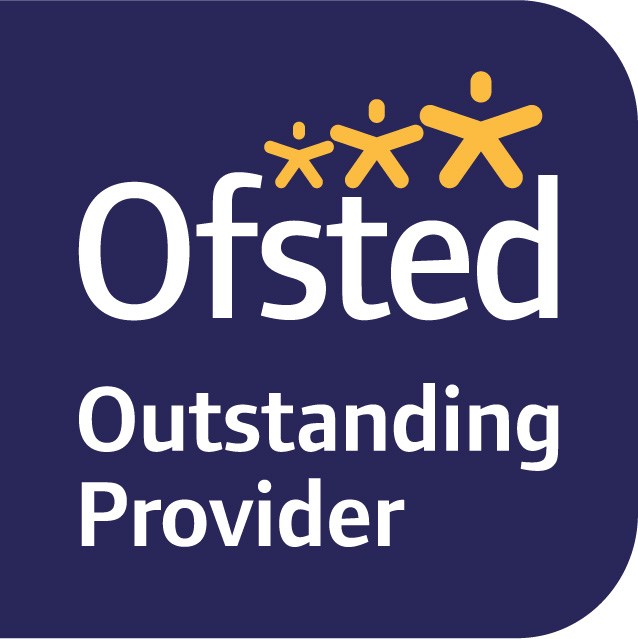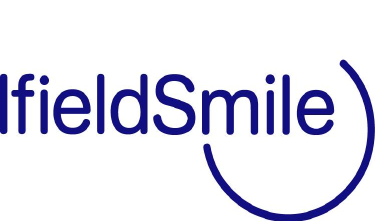Please find below home learning resources:
Oak Class Home Learning
English
We are learning about adjectives (describing words).
Lesson 1
LO: To begin to understand what adjectives are ( describing words).
Starter
Watch ‘The way back home’ https://www.literacyshed.com/thewaybackhome.html
Discuss the story/video-what happened in the story? What did you like/dislike? How do you think the characters are feeling? Why do you think that? What do you think will happen next?
We are going to be looking at how to write a description of a character, place or rocket in the story.
Can you remember what an adjective is?
Activity- Choose which activity you feel would be most appropriate for your child.
Activity 1: Match the aliens using the alien picture cards.
Activity 2: Find a range of objects- spoon, blanket, shoes, toys etc. Look at the objects and see if you can use adjectives to describe the objects. What colour is it? Is it big or small? What does it feel like?
Activity 3: Pause the story at different points. What can you see? Can you describe what the rocket/boy/alien looks like? Answer using full sentences- The alien is blue. Can you write down some key words? Use phonic knowledge to help you sound out tricky words.
Challenge
Can you extend their speaking and listening sentences by adding the conjunction ‘and’- The alien is blue and has black eyes.
Lesson 2
LO: To be able to write a sentence about a character using adjectives.
Watch ‘The way back home’ https://www.literacyshed.com/thewaybackhome.html
Today we are going to write sentences about a character of our choice using adjectives.
Activity- Choose which activity you feel would be most appropriate for your child.
Activity 1: Play ‘Find the alien’ game. Use PECs (if appropriate) to support.
Activity 2: Choose a character from the story, either the boy or the alien. Describe what the character looks like. Attempt to write the adjective using phonic knowledge to help. If it is too tricky, try and hear the initial sound of the word.
Activity 3: Choose a character from the story, either the boy or the alien. Describe what the character looks like using full sentences and conjunctions (and). Write your sentences using phonic knowledge to help.
Challenge
Can you remember to include capital letters, full stops and finger spaces?
Can you read your writing to your family?
Lesson 3
LO: To be able to describe in a variety of ways.
Recap the story and characters in ‘The way back home’. Today we are going to extend our writing by adding similes to our writing. Explain what a simile is and give an example: as red as a tomato.
Activity- Choose which activity you feel would be most appropriate for your child.
Activity 1: Match objects based on colour and size. Use PECs (if appropriate) to support.
Activity 2: Recap the adjectives that you chose to describe your character. Can you think of something that is the same as your adjective? Focus on colour and size- as yellow as a lemon or as blue as the sky. How many similes can you think of?
Activity 3: Recap the adjectives that you chose to describe your character. Can you think of something that is the same as your adjective? Try to focus on characteristics as well as colour and size. If you thought the alien was brave, can you think of someone else that is brave? As brave as a lion? How many similes can you think of?
Challenge
Can you write a full sentence to describe your character using a simile?
Lesson 4
LO: To be able to write a setting description.
Today we are going to use adjectives to describe a place. You can either choose a setting from the story ‘The way back home’ or you can choose a different setting of your choice. If you have a photo of when you were on holiday for example, you could describe that place/setting.
Activity- Choose which activity you feel would be most appropriate for your child.
Activity 1: Recreate a setting through sensory exploration. Try and recreate a setting with your child. If you chose to describe the beach, let your child feel the sand. If the sea was warm, have a bowl of warm water for them to explore. Be as creative as possible!
Activity 2: Recreate a setting through sensory exploration. Complete the same activity as group 1, but have a go at writing some key words too. Use phonic knowledge the help.
Activity 3: Recreate a setting through sensory exploration. Complete the same activity as group 1 and 2, but have a go at writing full sentences to describe your setting. Remember capital letters, finger spaces and full stops. To extend your writing even further, add a conjunction and a simile.
Challenge
Can you draw a picture of the setting that you are describing?
![]()
Maths
We are learning about money.
Last week, we started to learn about money. We began recognising coins and identifying their value. Below are some activities that will support your child to develop their understanding of money whilst they are at home.
Lesson 1
LO: To begin to recognise money (coins).
Starter
Clap and count in 1s to 20, back from 20 and in 2s.
Show your child a range of coins. Can they identify all of the coins? Talk about the features of each coin. What colour is it? Is it big or small?
Activity
Activity 1: Using coins and crayons/pens/pencils to trace/colour over different coins. Group the coins in to the correct groups when tracing them.
Challenge
Can you find the odd one out of a group of coins?
Lesson 2
LO: To begin to understand the value of money (coins).
Starter
Share the money song https://www.youtube.com/watch?v=dFzAU3u06Ps Can you identify the coins in the song?
Have a range of different coins laid out. Can you find all of the 1p? 2p? 5p? 10p? 20p? 50p? £1? £2?
Activity
Ask your child to find a 2p coin. Then ask your child to draw the correct number of circles for the value of the coin- for 2p, it would be two circles.
If your child does not like writing/drawing, use finger paints for circles instead.
Repeat this for all coins.
If this is too tricky, focus on matching coins. Begin by matching the same colour coins and then extend by matching coins based on their value.
Challenge
Order coins from smallest to biggest.
Lesson 3
LO: To begin to learn how to add coins together.
Starter
Clap and count in 1ps to 20p. Tell your child that you are going to clap and they will listen- how many pence did you get up too? Remember it is important to say ‘p’ as we are counting in pence/pennies.
Activity
Set up a pretend shop and a till. Take turns playing the shop keeper and customer. Support your child to add coins together to make the correct value for what they would like to buy. If an item costs 7p, which two coins do we need? Use counters to support with counting out the amount. If you do not have counters, pieces of dry pasta will help just as well.
If this is too tricky, focus on adding one more to a coin. For example, 2p+1p. Alternatively, continue to focus on matching coins based on their value.
Challenge
Identify pound coins and add them to smaller coins (£1 + 10p). Work out the answer mentally to extend even further.
Lesson 4
LO: To be able to add coins together.
Starter
Count to 100 with Jack Hartman - https://www.youtube.com/watch?v=0TgLtF3PMOc
Activity
Activity 1: Have cupcake holders with different amounts labelled on the bottom. Can you find the right amount of coins to make the value and put it in the cupcake holder?
Activity 2: Differentiated addition worksheet.
Challenge
Can you add the coins together in your head?
![]()
Science
LO: To explore magnetic materials.
Lots of the rubbish that floats around in space comes from space rockets etc some of this is metal rubbish
- Using magnets sort the rubbish that is magnetic. Could we use magnets to help make the job faster? Will they attract all rubbish? Are all metal objects attracted to magnets?
![]() History
History
LO: To learn about a famous space man ( Astronaut)
Starter
Bedtime story about Neil Armstrong’s life
https://www.youtube.com/watch?v=Cvu74fDXrO0
Share video of Neil Armstrong and discuss – complete the quiz at the end
https://www.bbc.co.uk/bitesize/topics/zjwvb82/articles/zhx4k2p
Watch the first moon walk- link this to the force gravity.
Activity
What can you remember about Neil Armstrong from the video- what did he like doing? what were his friends names? What did he travel in, where did he go? What war did he fight in? What country did he come from?
Colour a picture of Neil Armstrong and write/stick key words around him. What country was he from? How old was he when he got his pilot licence? What was the name of the rocket? What date did he walk on the moon?
Challenge
Write a sentence about something Neil Armstrong liked doing when he was younger at the bottom of the page.
DT
LO: To use a range of materials to respond to a topic ( make astronauts and aliens).
Starter
Show modelled versions of what we are going to make this week and next week
We are going to use our own faces to stick onto the astronauts and we are going to try and make them have the real colours of an astronaut.
Activity
Use toilet rolls, googly eyes, circles of green, pipe cleaners and pom poms to make aliens.
White card for the astronauts, stick helmet, arms and legs together- colour feet grey, strips of red and blue and a Nasa badge to stick on, photo of pupil for each one.
Challenge
Can you explain how you joined some of your materials together? Can you tell me how many ways you can stick something to something else in DT/Art?
![]()
Art
LO: To make planet pictures using pastels/crayons/pencils/pens (dependant on resources available at home)
Starter
Listen to the planet song- focus on the different colours of the planets and see if you can remember - Planet song: https://www.youtube.com/watch?v=mQrlgH97v94
Then watch the solar system song
https://www.youtube.com/watch?v=F2prtmPEjOc
Discuss different colours and sizes and the names of the different planets.
Today we are going to use pastels/crayons/pencils/pens to help us draw the solar system onto black sugar paper- so we need to think about the size of the planets and the colours, if they have any rings and if they have any craters or bits sticking out – we will do one at a time.
Activity
Draw the different planets in the Solar system to scale using the correct colours. Could use different cut outs of circles to get a good circle shape- have different sizes for them to use.
Challenge
![]() To remember the colour and size of the planets from the sun outwards
To remember the colour and size of the planets from the sun outwards
Life Skills
LO: To understand how to care for our clothes.
Starter
Share with your child some very dirty clothes (mud all over them etc) and some very clean clothes. Can the students identify which ones are clean and which are dirty? How can we make our dirty clothes clean again?
Activity
Activity 1: Create a paper plate washing machine ( we started this in school last week, however it would be nice for the students to be able to finish one at home).
Activity 2: Support students to take some dirty clothes to the washing machine- put clothes in, washing powder, press the button etc.
Activity 3: Sequence how to use a washing machine.
Sensory activity: can hand wash some clothes in bowls of water and then hang out to dry using pegs.
Challenge
![]() Draw some clothes in the washing machine. Think about the items that can and cannot go in to the washing machine.
Draw some clothes in the washing machine. Think about the items that can and cannot go in to the washing machine.
Sensory/extra activities
Please find below some extra activities that you might like to complete with your child linked to our topic this term.
Design a space rocket using your handprint.
Space themed sensory bottles.
Use water, glitter, sequence to create space themed sensory bottles. Be as creative as you like!
Make rainbow spaghetti or rainbow rice.
Mark making in shaving foam.
Create and deign alien masks.
Use flour to pretend you are making footprints on the moon.
Flour could also be used for mark making.
Potato print planets.
Create space themed sensory bags.
Make Jelly Aliens.
Music
Please click this link to access music homelearning.












